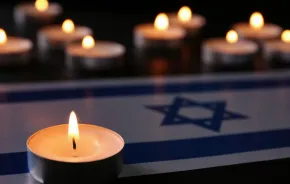 I was stumped today. My daughter asked me the spelling of the vibrant hues, the characters in the rainbow. She asked me to spell the essence of nature.
I was stumped today. My daughter asked me the spelling of the vibrant hues, the characters in the rainbow. She asked me to spell the essence of nature.
Ok, she wasn’t asking in those particular words, and it wasn’t all that deep. If I have to get to the point (getting there), she was asking me to spell ‘color’ for her.
Yes, I am educated. Yes, I have a post graduate degree. Yes, I’ve been able to navigate life in the U.S. with my English. Therefore, I must know the basics of the language and the spelling of the word ‘color.’
But you see, to me — it’s ‘colour.’ I know DD is going to drop the ‘u’ when she learns about it in her American school. So I wasn’t sure if I should confuse her. As certain as I am that my daughter is going to be the next Einstein, CV Raman, Shakespeare, Roger Federer and Margaret Thatcher combined, I didn’t think she would be able to understand my explanation of the differences between American and British English at age 4. And I didn’t feel completely prepared to tackle the topic, especially since her current favorite (See, autocorrect won’t let me type ‘favourite’ without that glaring red underline) English word is ‘why.’
You see, I fell into an abyss last week, trying to explain why ‘no’ and ‘go’ were similarly spelled but her favorite accessory, ‘bow’ was not ‘b–o’. Before you judge me, I wasn’t trying to force spelling down her throat. She spells things phonetically and writes words the way she says them. The problem arises when she reads the word; that’s when she feels I’ve been tricking her. Aah ... the eternal problems with correlation. You’re nodding your head empathetically now aren’t you?
I would much rather teach her Hindi, our native tongue. It’s so simple. Each sound has a letter. Each letter makes a different sound, so there’s no cause for confusion, and I can sleep in peace knowing my daughter would never think I was trying to trick her.
But no, the little one is an ‘Englishian’ (the term she coined for herself because she loves talking in English.) and will communicate only in English. And spelling — well, that’s just part of the problem.
The English that we’re used to is very different from the English we hear here. And she’s often baffled that people just don’t get her. Granted she’s developing a confusing accent now —a combination of Indian and American — but the problem is not that. The problem is with the difference in the words used. And it’s not just her problem, it’s mine. too. People don’t understand what we’re talking about until we play charades with them and act out what we’re trying to convey.
Just the other day, DD wore a pink frock. Since coming to the U.S. pink dominates her wardrobe. She has close to fifty shades of that color (darn the autocorrect). Excited with how frilly it was, she wanted all her classmates to see it.
“Look, look at my new pink frock.” She had to repeat herself three more times, before an Irish teacher familiar with the word said, “Ah, you’re wearing a pink dress.” Thank God for little mercies.
You see, the way we use the word back at home in India, ‘dress’ is a verb — the process of making yourself presentable. It is also any clothing worn by people. When my parents said “wear your dress,” they just meant, wear some piece of clothing. The dress could be a salwar kameez, a skirt and blouse, or just about anything. Oh, and wardrobe is referred to as ‘dresser’ here. And the ‘cupboard’ becomes ‘closet’.
Our trouble with words continues when DD says she’s going to wear her swimming costume. She always seems to disappoint the audience that’s expecting her to show up as The Little Mermaid or Nemo the fish. Swimming costume translates to the bathing suit, or the swimsuit! Back home, she could even say ‘swimming dress,’ without her audience expecting her to present herself in cool couture.
It happens to me too. I’ve never been able to fill the gas tank with a straight face. Petrol is what goes into the car. Gas is what comes from bodily outlets or from the pipe that helps make food in the stove. And while we’re on the subject of cars, a trunk is what an elephant has or where you store old stuff; a car has a dickie (the South Asian name for what the British call ‘the boot’).
If we ditch the vehicle and travel by foot, it’s never on a footpath. It’s a sidewalk. A pedestrian crossing is a crosswalk. And while you wait for the street car you realize it’s really not a car (shocking!), it’s a tram!
But we’re learning. We’re learning that we can’t post our letters; we need to mail our mail. We don’t wait in a queue, we stand in a line; and we don’t use the washroom, we use the restroom, even if there’s no place to actually rest in there.
Hopefully, reading this, my editor Natalie will not throw this piece in the dustbin. She may well ‘trash’ it, though, or toss it in the garbage.
 Padmaja Ganeshan-Singh is a new expat from India and a rookie Superwoman. This is her first time managing her family without any help and boy, does she have newfound respect for the American woman. She is the mother of a high-energy preschooler who presents her with the challenges of preserving the culture of her homeland while embracing the culture of her new home in Seattle. From driving on the 'right' side of the road to understanding the craze behind Halloween candy, Padmaja's trying to make meaning out of the madness around her. For a peep into her expat life, check her blog .
Padmaja Ganeshan-Singh is a new expat from India and a rookie Superwoman. This is her first time managing her family without any help and boy, does she have newfound respect for the American woman. She is the mother of a high-energy preschooler who presents her with the challenges of preserving the culture of her homeland while embracing the culture of her new home in Seattle. From driving on the 'right' side of the road to understanding the craze behind Halloween candy, Padmaja's trying to make meaning out of the madness around her. For a peep into her expat life, check her blog .












